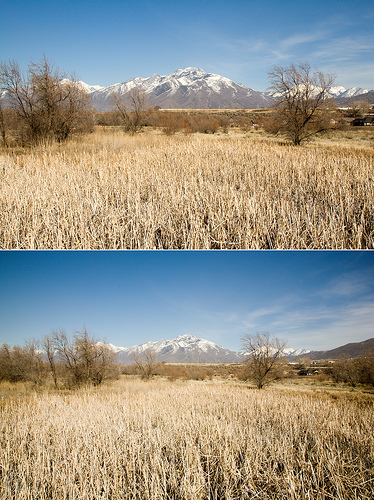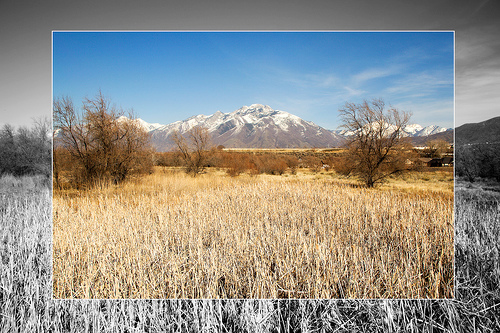March 13th, 2007
Digital Camera Sensor Sizes Explained
I recently began shooting with a Canon 5D, moving up from the 30D body that I had been using. The major difference between the 5D and the 30D is that the 5D uses a full-frame sensor as opposed to the 30D’s APS-C sensor. Terms like “full-frame” and “APS-C” can be a bit confusing, so hopefully I can shed a little light on the subject with today’s post.
In digital cameras there is a sensor in place where the film used to be in film cameras. The light passing through the camera’s lens projects the image onto this sensor which then captures it digitally and records the image to memory. These sensors vary in size in both the number of pixels they contain (megapixels) and their physical dimension. Most digital SLR (single lens reflex) cameras bear a strong physical resemblance to the 35mm SLR’s we shot in decades past. But a difference between many of these cameras is the size of their sensor.
Taking Canon’s DSLR line for example, several of their cameras have an APS-C sensor which is smaller than a frame of 35mm film. The 30D model (a camera I use) has this size of sensor. Since the sensor is smaller it only records a portion of the image the lens is projecting. This results in a “zoomed in” effect on the captured image. On cameras with this size sensor, a photographer has to take the focal length of their lens and multiply it by 1.6 to see what the equivalent focal length is. My new 5D body, on the other hand, has a sensor that is the same size as a 35mm frame of film and therefore the equivalent focal length of the lens remains the same.
In the image above I took two pictures from the exact same location with a 30D and a 5D. I used the same lens (Canon 24-105 f/4L IS) on both photos at a focal length of 24mm. By overlaying 100% size images on top of each other you can see how much more of the scene is captured by the 5D’s full-frame sensor (the color 30D image is on top of the black & white 5D image).
Here is another example of the two images next to each other:

Top image taken with Canon 30D – Bottom image taken with Canon 5D
Notice how much more of the scene is captured with the 5D in the bottom image? The lens has a significantly greater wide-angle field of view. This is particularly helpful in landscape photography and architectural captures (not to mention my industry of real estate). The 1.6 crop factor sensor on the other hand can be a benefit when a photographer seeks added ‘reach’ for a lens. I recently used a 300mm lens with my 30D to photograph eagles and hawks in Farmington Utah. By putting this lens on the 1.6 crop camera, it became an equivalent of 480mm – a nice improvement.
In addition to the larger physical size of the sensor, the total amount of pixels is obviously different between the two. The 30D records an image of 3504 x 2336 pixels (8.2 megapixel) while the 5D records a 4368 x 2912 pixel (12.8 megapixel) image. This difference gives a noticeable quality boost to the 5D.
Both of these sensor types have their advantages and their applications. For the type of photography I shoot, I prefer the wide view and image quality of the 5D. The exception to this is when I need the added reach of the APS-C equipped 30D.
Which do you prefer?
Canon 5D, Canon 24-105 f/4L IS lens – 1/125 second, f/16, ISO 100 &
Canon 30D, Canon 24-105 f/4L IS lens – 1/125 second, f/16, ISO 100
LeggNet’s Digital Capture
© Rich Legg, Inc. All rights reserved.






